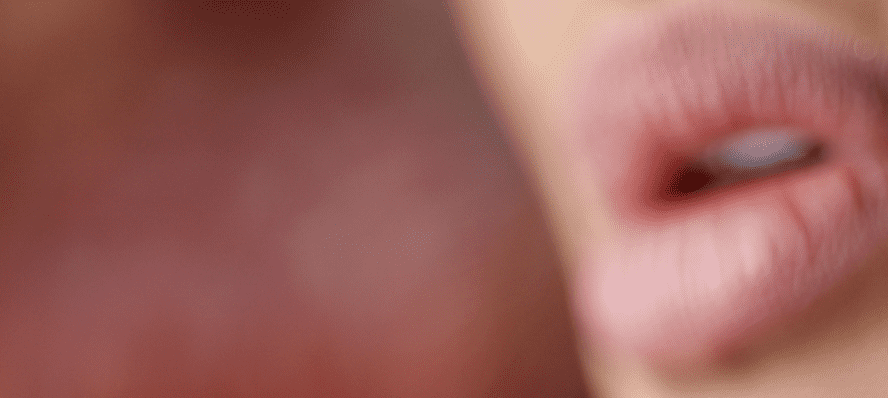The harsh ‘ess’ sounds orators or singers can produce during a powerful delivery close to a microphone are well-known. Almost every vocal recording contains ‘ess’ noises, whether from a strong vocal delivery, bad recording, speech impediments, or simply many ‘ess’ words spoken together. Wind instruments and other musical instruments may also make piercing ‘s’ sounds.
The de-esser is a tool to attenuate or remove these ‘ess’ noises, by reducing the level of high frequencies near the ‘ ess’ frequency. It does this by narrowing the bandwidth of the de-essing filter so that only those frequencies around the target ‘ ess’ are reduced in volume, leaving the rest of the spectrum untouched.
Do I Need a De-Esser?
Many De-Essers come with a range of controls that can seem daunting to new users. This blog post will walk you through the basics and show you how to use your De-Esser right! We’ll start with some tips for recording vocals, then we’ll talk about applying this technique in the mix. Finally, we’ll cover it on stage. Today let’s talk about how are using your De Esser right.
De-Essing is often a necessary step when mixing audio, but it’s rarely simple—especially if you’re just getting started. Many elements influence De-Essing’s challenging aspect, including the way split-band processors can alter the character of a sound and how human voices can fluctuate between sibilance and sibilancy. There are De-Essers in most DAWs, and there’s a never-ending list of aftermarket plugins.
What Is De-Essing?
De-Essing is the process of reducing or eliminating the sibilant sounds from a vox track. Sibilant sounds are those that are produced by consonants such as “S”, “T”, and “F”. They can often make a vocal track sounds harsh or distorted. De-Essing helps to smooth out the sound of a vox track, making it sound more natural.
There are two main types: analog and digital. Analog De-Essers use electronic filters to remove the sibilant sounds, while digital De-Essers use software to achieve the same effect. Both types of De-Essers have their pros and cons, and it’s up you to decide which one will work best for your situation.
What Is Sibilance?
Sibilance is the harshness or distortion that can be heard in a vocal track when certain consonants are pronounced. Sibilant sounds are produced by consonants such as “S”, “T”, and “F”. They can often make a vocal track sound harsh or distorted.
Smooth out A Vox Track
De-Essing helps to smooth out the sound of a vox track, making it sound more natural. Sibilance itself isn’t terrible; it would sound odd if we removed it entirely. However, too much sibilance can make a vocal track difficult to listen to.
The sibilance in these examples occurs at the higher end of the frequency range. When listening to music on earbuds and small speakers, sibilance is more unpleasant. AirPods and normal smartphones and laptop speakers are used by hundreds of millions of people to listen to music. Because these frequencies are so high and powerful, they can easily take over a mix if not reduced appropriately.

De-Essing Techniques for Vocal Tracks
There are many De-Essing techniques that you can use to get rid of sibilant sounds in your vocal tracks. However, some De-Essing tools require a longer attack time (and therefore less) and others work better with a shorter attack time (and more). Experiment with different De-Essing techniques and find the one that works best for your track. To begin, pay attention to the singer’s voice and the vocal recording for quality.
When De-Essing during the recording phase, some plugin can be used as an insert effect on a vocal soundtrack. This means that you would deactivate the De-Esser’s output and route it directly into its input (if you’re using an analog version). You would then deactivate the De-Esser’s input and route it to its output (if you’re using a digital plugin). If your De-Esser has a threshold control, make sure that it is turned down all of the ways. This prevents any De-Essing From happening when recording.
Using Your De-Esser Right
Once you’ve set up your De-Esser this way, you can begin recording. You will need to monitor the De-Essed signal while recording in order to make any necessary adjustments. Make sure that no De-Essing is happening during your recordings by checking for red lights on your De-Esser or software plugin. If any are lit up, then there’s too much De-Essing happening and you’ll need to adjust the threshold control.
A Few De-Essing Tips to Get You Started
- Use a high passing filter to remove any low-end noise from the vox track before De-Essing. This will help to prevent any De-Essing artifacts from being introduced into the high-frequency range.
- Use a De-Esser with multiple bands to increase precision. The more bands that your De-Esser has, the better it will be able to detect specific frequencies for De-Essing purposes.
- When De-Essing during the mix, start by slowly increasing the De-Esser threshold control until you start hearing De-Essing on your vocal track. If there are any De-Essing artifacts (distortion, sss sounds, etc.), then back off of the De-Esser’s threshold control to minimize these effects.
- Try using sidechain compression on your vocal track by routing a De-Essed version of the same track back into an audio channel on which you are compressing your original vocal track with a fast attack time. This technique has a natural sound and is especially useful during the mixing stage.
De-Essers and Dynamic EQ
The disadvantage of hand De-Essing is that it takes a long time. Adjusting manually by hand with a dedicated De-Esser plug-in or a dynamic EQ is more common. These tools will both analyze a specific frequency band to detect sibilance, most commonly in the sibilant region of the spectrum. When this sibilant audio content reaches a certain volume, the De-Esser or dynamic EQ can automatically lower the sibilance.
This is obviously considerably quicker than scanning a waveform for sibilant sounds and lowering clip gain, and it’s usually clear enough to suffice. Just be careful that you don’t let these automatic solutions run unattended, as you could get undesirable results.

De-Essing in the Mix
When you’re ready to de-ess in your mix, start by inserting a de-essing plug into the vocal track that you want to de-ess. Make sure to insert it directly on the channel strip before any other effects are applied (EQs, compressors etc.).
Next, set up your de-essing parameters according to how much sibilance you want to de-ess. For the de-essing plug in that you are using, this may include setting a threshold control and varying the frequencies of specific band controls (if it has them). Once everything is set up properly, turn off all other effects on your vocal track so that only de-essing is happening.
Then begin de-essing by slowly increasing the de-esser threshold control until you start hearing de-essing on your vocal track. If there are any de-essing artifacts (distortion, sss sounds etc.), then back off of the de-esser’s threshold control to minimize these effects. Continue this process until you find a balance between de-essing and de-essing artifacts that you can live with.
De-Essing in Mastering
When de-essing during the mastering phase, it’s best to use a digital de-esser as an insert effect on your mix bus. This will allow you to fine tune the de-essing process without affecting the rest of your track. You can de-ess either during the mixing or mastering stage.
The de-essing process is basically the same when de-essing in mastering as it is for de-essing in the mix: set up your de-esser according to how much sibilance you want to be removed and then start gradually increasing its threshold control until artifacts begin appearing. If they do, back off of the de-esser’s threshold control until they’re gone.
It’s also important to make sure that you’re not de-essing too much during the mastering stage. Over-de-essing can cause your track to sound harsh and brittle, so be careful not to go too far with it.
When de-essing in the mix, it’s best to use a digital de-esser as an insert effect. This will allow you to fine tune the de-essing process without affecting the rest of your mix. You can de-ess either during the mixing or mastering stage.
De-Essing Techniques for Vocal Tracks
There are many de-essing techniques that you can use to get rid of sibilant sounds in your vocal tracks. However, some de-essing tools require a longer attack time (and therefore less de-essing) and others work better with a shorter attack time (and more de-essing). Experiment with different de-essing techniques and find the one that works best for your track.

Do You Know How To Use a De-Esser?
Many de-essers come with a range of controls that can seem daunting to new users. This blog post will walk you through the basics and show you how to use your De-Esser right! We’ll start with some de-essing tips for recording vocals, then we’ll talk about de-essing in the mix. Finally, we’ll cover De-Essing on stage.
When to Use a De-Esser
- Use a De-Esser as an insert effect on your mix bus when De-Essing during the mastering phase.
- Set up your De-Esser according to how much sibilance you want to remove and then start gradually increasing its threshold control until artifacts begin appearing.
- Use a De-Esser for other instruments, such as cymbals and guitar tracks. De-Essing can also be used on other instruments to get rid of unwanted sounds. For example, you can de-ess cymbals to get rid of the hiss and crackle sounds. You can also de-ess guitar tracks to get rid of any excessive string noise. Experiment with different De-Essing techniques to find the one that works best for your track.
- When De-Essing in the mix, it’s best to use a digital De-Esser as an insert effect. You can De-Ess either during the mixing or mastering stage.
- Depending on your ears and doing manual De-Essing instead of using automatic de-essers tools, learn your favorite one out of the many the de-essing plugins.
- Reduce the threshold until a gain reduction is noticed. Now pay attention as you change the threshold. Locate the threshold at which sibliance is maintainable before vocal deterioration sets in.
When Not to Use a De-Esser
- De-Ess too much during the mastering stage, Over-De-Essing can cause your track to sound harsh and brittle.
- When De-Essing In the mix, never use defaults. This will prevent you to focus on the audible issues that this tool can cause. You always have to tweak the settings.
What Frequency Should I Set De-Esser?
De-Esser has default settings that can be used to record most songs or speech recordings. The default setting is 5506Hz. This frequency attenuates to about 3-kHz with most of the attenuations occurring at the rate of 5kHz. SideChain Filters can be used in a standard way for a high pass for general de-ingesting.
How do you EQ De-Esser?
When sensitivity occurs, vocal sound are reduced to an acceptable level. Many engineers make this automatic by editing vocals on separate tracks.
Where do you put De-Esser?
It can be placed on a channel strip or inserted into an effect return track for mixing and mastering. Check your DAW it may include already a de esser plugin.
How do you audition with De-Esser?
This is a very powerful tool that can be used with just about any vocal sound track. As with many effects, it’s important to find the sweet spot of where you’re applying it in order to create your desired effect without introducing artifacts or making things sound too harsh.
Top 5 Tips to Reduce Sibilance in Your Microphones
Here are the top 5 tips to reduce sibilance in your microphones:
- Choose a microphone with a more robust sound.
- Keep your distance from the microphone.
- Tilt the microphone slightly off-axis.
- Place your finger against your mouth or a pencil.
- Use a De-Esser & EQ to correct the problem. Play with the different EQ parameters. Many EQs are great to show sibilant frequencies.

If you miss audio examples to start practicing what you learned today, use search to find examples, many vendors offer male or female vocals audio examples to give you some assignment when you get your feet wet in de-essing vocals.
Conclusion
Having a good De-Esser is essential for working with dialogue. Another excellent product from FabFilter is the Pro-DS, Nectar 3 De-Esser, or RX 9 De-ess (both iZotope) which features a De-Essing feature that transparently reduces sibilance from sources and offers an extensive range of controls to fine-tune even the most difficult ones. FabFilter’s Pro-DS is a versatile tool for limiting high-frequency content, such as drums or even complete mixes, when utilized in the ‘Allround’ mode.

The visual feedback makes it easy to manage the frequency control to keep an eye on the frequency spectrum. If you have a result that sound unnatural or the vocal sound dull you may address the wrong problem frequencies until the vocal chain sound smoother with no harsh frequencies you have to work on the recorded original signal, rinse and repeat is also true in the music industry.
Taming Sibilance Champion
If you are a champion on the vocal bus, try to enhance the whole track by paying attention to the acoustic guitars. At the end you will become the Master in taming sibilance, wide band de essing, and split band de essing. Even the most skilled vocal champions can benefit from continuous improvement, so don’t be afraid to seek out feedback and advice from others in the industry. Remember, becoming a Master in audio production is a never-ending journey, but with dedication and perseverance, you can reach new heights in your craft. And don’t forget to stay updated with the latest industry trends and techniques by reading the latest noire review on audio production tools and software.
Using a De-Esser is an essential part of reducing unwanted sibilant sounds in your vocal tracks. In this blog post, we’ve walked you through the basics on how to use your De-Esser right. We’ve also provided some De-Essing tips for recording vocals and De-Essing in the mix. Finally, we’ve talked about frequency settings and where to put your De-Esser. Experiment with different De-Essing techniques to find the one that works best for your track!










